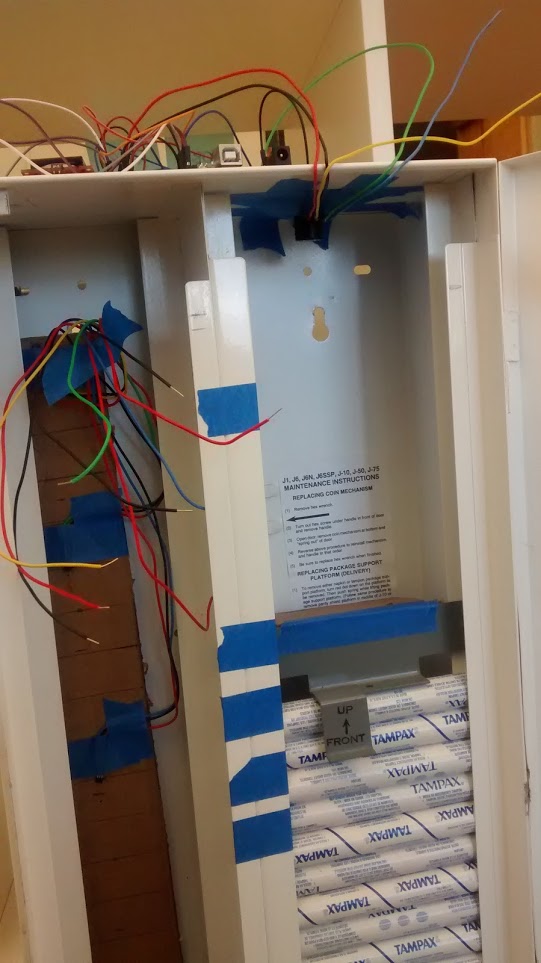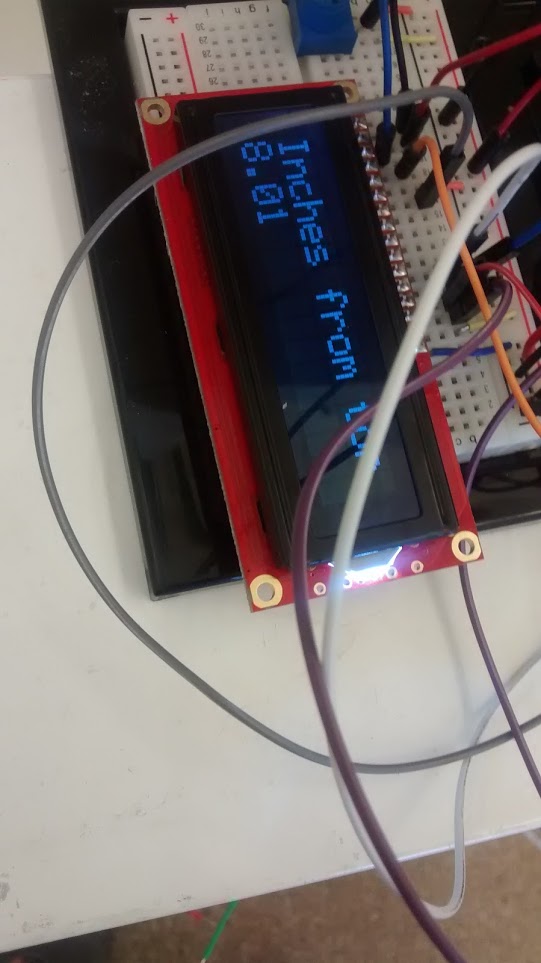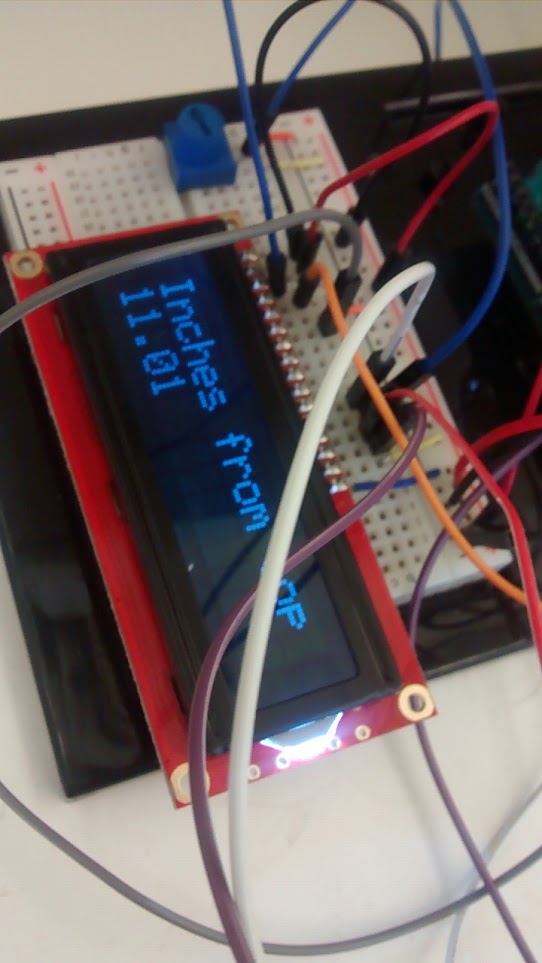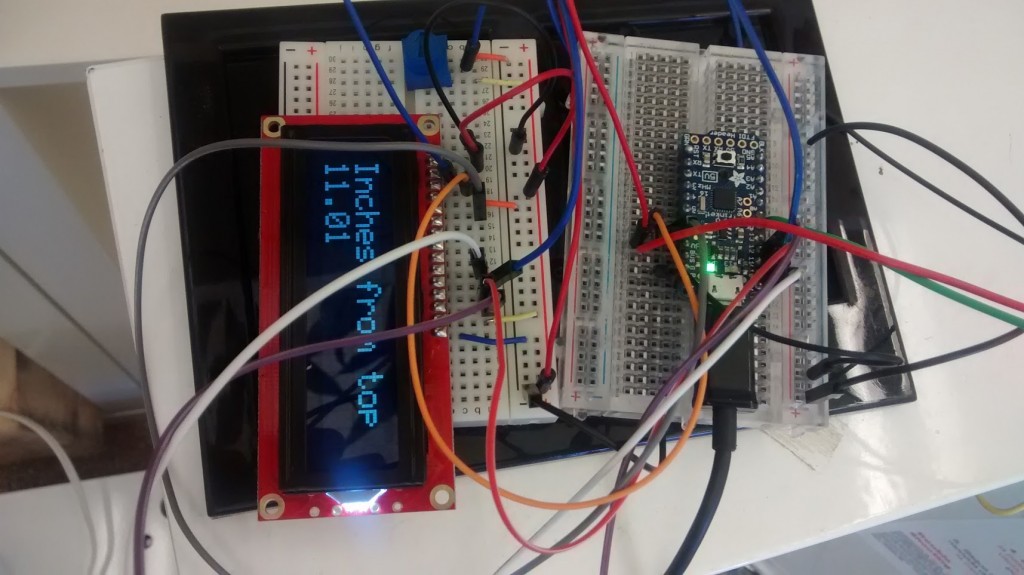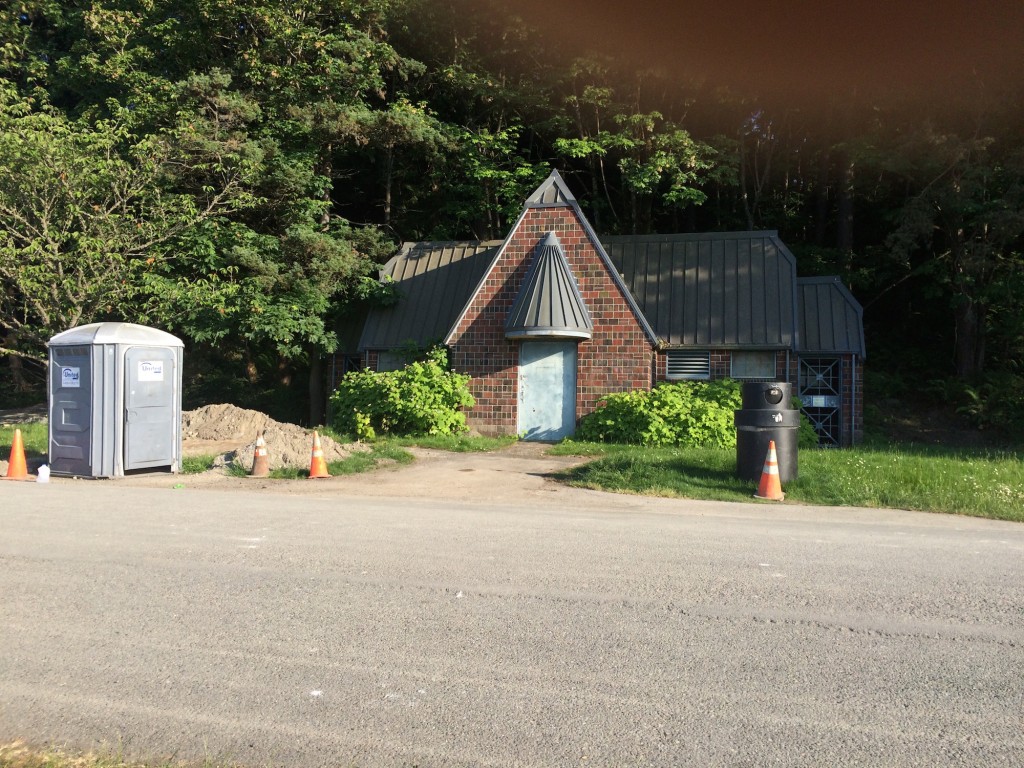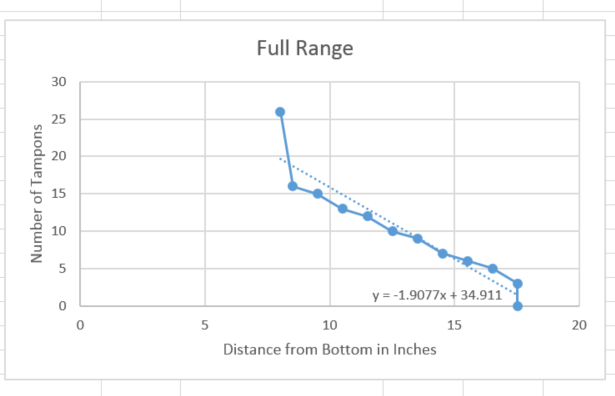
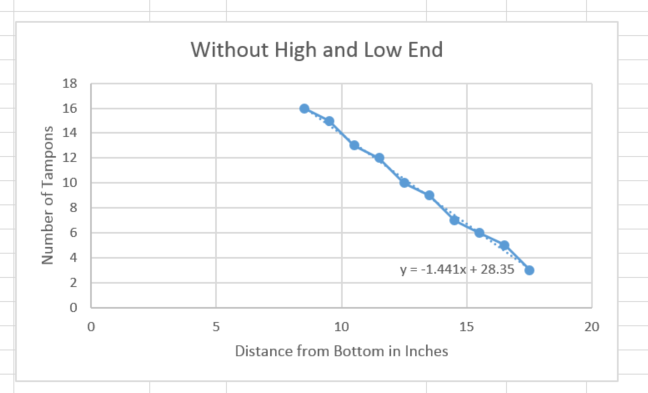 This week I worked with the current sonic sensor to test how accurate it would be in use. The graphs above are my observations about reported distance and the number of tampons in the dispenser. I was trying to generate a function that would calculate the number without a lookup table. The first graph, it did not work out well because I included the ends, where the biggest outliers are. Removing those outliers, it gets much better. Unfortunately, this means it will be hard to tell how much product is left when the dispenser is close to empty. This sensor is unable to tell the difference between empty and 3 tampons left. I also discovered an issue where the current sensor needs about a minute of calibration time with an empty dispenser, which will be hard in the field. To this end, I began researching similar sensors and will be trying a new one in the near future.
This week I worked with the current sonic sensor to test how accurate it would be in use. The graphs above are my observations about reported distance and the number of tampons in the dispenser. I was trying to generate a function that would calculate the number without a lookup table. The first graph, it did not work out well because I included the ends, where the biggest outliers are. Removing those outliers, it gets much better. Unfortunately, this means it will be hard to tell how much product is left when the dispenser is close to empty. This sensor is unable to tell the difference between empty and 3 tampons left. I also discovered an issue where the current sensor needs about a minute of calibration time with an empty dispenser, which will be hard in the field. To this end, I began researching similar sensors and will be trying a new one in the near future.
Category: Uncategorized
Design: Week 2
This week I successfully got the sonic sensor, which was the other option for a sensing platform, working in the casing. I soldered wires to the relevant pins of the sensor and mounted the sensor to a small piece of cardboard attached to the top of the tampon side of the dispenser. I quickly discovered that it was hard to properly line up the sonic beam to hit the weight on top of the tampons, but I solved this problem by adding some extra cardboard to the back side of the weight. This doesn’t affect the operation of the machine but makes it easier for the sonic sensor to see. After hooking up an LCD, I was able to easily see the readings from the sonic sensor. I determined that the sensor has a blind spot within about the first 9 inches or so of its reading, but after that it works like a charm and with many fewer wires and mess than the hall sensors from last week. This week, my goal is to turn the inches reporting into more relevant numbers and come up with a solution to properly handle the sonic sensor’s blind spot. Finally, I got the Pro Trinket, an Adafruit micro-controller with most of the same guts as the Arudino in a much smaller package, working (as you can see in the final image). It is harder to debug on, but it will be used in the final product due to size constraints.
Seward Park
I biked to Steward Park with a friend and we ended up at the most northern part of the park sitting at the water’s edge (see the scenic documentation photos). I decided to check out the restrooms (freestanding building) that were located nearby where we were sitting, but found them to be closed. Next to the comfort station was a portable toilet with a line of a three people waiting outside. Two of the people were waiting for a small child inside (who they kept opening the door to check on). I waited to the side for a few minutes while the line died down. When I finally went inside I noticed that it was pretty large, the floor was relatively clean (compared to the other portable toilets we’ve observed for this study) and was outfitted with hand sanitizer.
